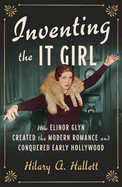
The writer Elinor Glyn (1864-1943) was extravagantly vain, unapologetically snobbish, flagrantly money-minded and of unremarkable literary talent. But Hilary A. Hallett's Inventing the It Girl: How Elinor Glyn Created the Modern Romance and Conquered Early Hollywood demonstrates that Glyn, having "done her part to let loose the genie of women's sexual liberation," is an undersung feminist trailblazer ripe for a biography.
Born on the island of Jersey, England, Glyn developed her passion for books in her stepfather's library and her taste for the finer things following a trip to Belle Époque Paris as a teenager. A middle-class child of the Victorian era, Glyn married up--she landed a proper English gentleman--and soon learned that, as she would write, "brains did not count" when one was the mistress of an estate. But her husband had a gambling problem and the family needed money, so Glyn sought what was then considered an unsuitable job for an upper-class woman: professional writer.
Glyn had success with her books, especially Three Weeks, her scandalously steamy and occasionally banned 1907 romance novel. Given Glyn's crowd-pleasing notoriety, it's no wonder that Jesse Lasky, vice-president of production at Famous Players-Lasky Studio, invited her to Hollywood to write for the movies. In the film world as in the literary one, Glyn's calling card was her ability to give even the raciest stories an aristocratic gloss.
Exhaustively researched and decked out with 50-odd photos and reproductions, Inventing the It Girl is rich with history. Hallett (Go West, Young Women!) is utterly persuasive regarding the beneficent influence of Glyn. --Nell Beram, author and freelance writer

